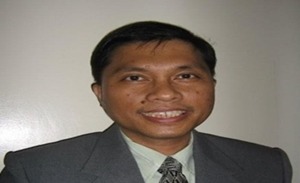OBLIQUE OBSERVATIONS
By Atty. Gilberto Lauengco, J.D.

“Excellence is not a destination, it is a continuous journey that never ends.”- Brian Tracy
This year, several aid programs by both national agencies and local governments are set to be implemented. As usual, there are several naysayers who have rehashed their criticisms of direct aid programs. The said critics claim that all of these programs are only short term or band aid solutions to the root problems in several communities. It is respectfully submitted that these critics might not be seeing the big picture insofar as far as these programs are concerned.
Admittedly, some of these programs may be limited in terms of end goals. Many of these programs, however, are actually part of larger projects where the proponents are taking the long view. The project planners have considered what is likely to happen in the future over a long period, rather than the immediate effects. In some local governments, the direct cash aid program is just the first phase. The second phase will be livelihood aid or loan to qualified individuals. The third phase would then be connected to housing programs. All of these phases will involve an electronic payment gateway that can manage, record , filter and secure the said aid distribution. These programs are not one off projects but rather pieces of a long endeavor with its working parts being tweaked continuously until a desired outcome is achieved. This project philosophy adheres to the Japanese concept of Kaizen.
Kaizen is a Japanese term meaning change for the better or continuous improvements. It is a business philosophy that emphasizes continuous development in process and operations. Practitioners of Kaizen promote productivity and achievement of end goals through a gradual and methodical process. Kaizen has three basic pillars which are found in the new multi-tiered aid programs supported by the electronic gateway system.
The first pillar in Kaizen is housekeeping. Housekeeping is managing the environment in which the project is being created and launched. In the aid program, the operation is augmented by an AI backed electronic payment that automates much of the process and limits human intervention.
The second pillar of Kaizen is waste elimination or avoidance. In essence, any part of a program that does not add value or worse deducts values should be eliminated. One of the primary problems of aid programs is leakage. By automating the filtering and delivery system, sources of leakages such as ghost and double recipients can be minimized. By minimizing waste a gradual long term improvement can be better achieved.
The third pillar of Kaizen is standardization. Pre-set specifications or templates per step of the process is implemented to easily gauge the efficacy of each step. Once properly assessed, each step can be improved in gradual increments until the system is finetuned.
For incumbent local government officials, implementing a Kaizen like philosophy in their projects can be an integral part in what I call politics through accomplishment. If their projects are implemented and communicated properly, incumbent officials need not exert that much effort when campaign time comes. It is a win-win proposition where officials can be assured of a next term while the citizens get quality service.
This is my oblique observation.





